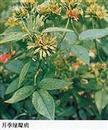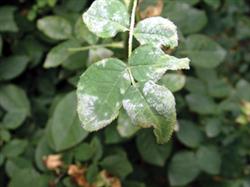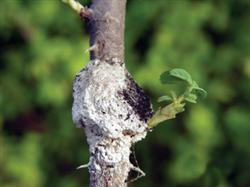Symptoms and control of rose green petal disease

Symptom petals are thin and narrow, showing green or leaf shape, Corolla turns green and flowers change into leaves, which is a typical symptom of green petal disease of rose. All the plants suffering from this disease, under the same cultivation and management conditions, the plant type is shorter than the general rose varieties, the lateral branches are numerous, the leaf shape is narrow, and the petiole and stem are less red. The flowers are fertile and blossom. Until winter, the green flower lasts for a long time, but when it is hot in summer, the base of the pedicel is easy to form an abscission layer and fall off at a touch. Pathogen MycoPlasma-likeorganisim (mycoplasma-like) this kind of mycoplasma exists in the phloem cells of the "green calyx" leafy Corolla base and young petiole, showing oval and nodular shapes. Most of the new individuals formed after division are globules with a diameter of 100mm and 800nm. At present, it is known that the main way of virus transmission is artificial grafting, and whether there are other mediators such as virus-transmitting insects in nature remains to be investigated. Prevention and control methods 1. Strengthen quarantine to prevent seedlings with virus from being brought into disease-free areas. 2. Timely control of suspicious transmission media such as piercing and suction pests. 3. Use disease-free plants as propagation materials to remove diseased plants in time so as to reduce the source of spreading bacteria.
- Prev

Why did the rose cuttings die?
Symptoms: mainly harmful to flowers, leaves and twigs. At the beginning, the petals appear watery spots or petal tips, the edges become brown, rapidly expand, wilt, rot, and finally the whole flower browns and wilts. Under wet conditions, gray-green mildew can be seen, that is, conidiophores and conidia of pathogens. The characteristics of the disease.
- Next

Prevention and rejuvenation of rose aging
Symptoms: mainly harm flowers, leaves and twigs. At the beginning, water-stained spots appeared on the petals or the tips and edges of the petals turned brown, rapidly expanded, wilted and rotted, and finally the whole flower turned brown and withered. Grey green mould can be seen under wet conditions, namely conidia and conidia of pathogenic bacteria. Symptoms of the disease:
Related
- Fuxing push coffee new agricultural production and marketing class: lack of small-scale processing plants
- Jujube rice field leisure farm deep ploughing Yilan for five years to create a space for organic food and play
- Nongyu Farm-A trial of organic papaya for brave women with advanced technology
- Four points for attention in the prevention and control of diseases and insect pests of edible fungi
- How to add nutrient solution to Edible Fungi
- Is there any good way to control edible fungus mites?
- Open Inoculation Technology of Edible Fungi
- Is there any clever way to use fertilizer for edible fungus in winter?
- What agents are used to kill the pathogens of edible fungi in the mushroom shed?
- Rapid drying of Edible Fungi

